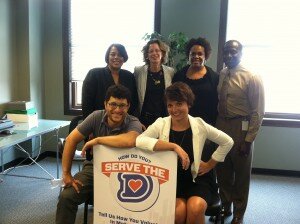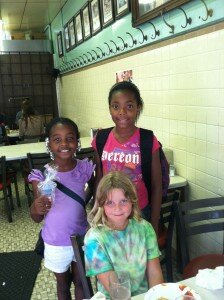When William Keith Kellogg established his foundation in 1930, he provided simple instructions: “Use the money as you please so long as it promotes the health, happiness and well-being of children.”
From the found ation’s inception, Battle Creek – founding home of the Kellogg Company and current home of the foundation – has enjoyed the bounty of W.K. Kellogg’s rich philanthropic tradition.
ation’s inception, Battle Creek – founding home of the Kellogg Company and current home of the foundation – has enjoyed the bounty of W.K. Kellogg’s rich philanthropic tradition.
Here’s what impressed me most during my visit with Jim Pearl and his team at HandsOn Battle Creek.
A dental program with a twist: HandsOn Battle Creek runs a dental program for people who can’t afford dental care. But instead of the usual charitable care model where the “haves” simply give away free services to the “have-nots,” they require all players to contribute something. Dentists provide free dental services to patients who need them and, in return, the patients volunteer in the community. The program has reduced emergency room visits for dental pain by a stunning 80 percent.
A 2-1-1 call center: HandsOn Battle Creek runs a 2-1-1 call center, a terrific asset that allows people to call to give or get help. Last year, the center got 38,400 calls, an astounding number given the town’s population of just 55,000 residents.
School-based service-learning: Jim and his team are helping teachers build service-learning into the curriculum, making the school experience relevant and cultivating a new generation of citizen leaders. While I was visiting, HandsOn Battle Creek hosted nearly 30 teachers in a three-and-a-half day workshop organized with help from Kellogg Community College, the Michigan Nonprofit Association’s LEAGUE program and the Fisher Foundation, plus the hard work of two AmeriCorps VISTA members.
When I walked into the classroom where they were working, the teachers were buzzing with energy. They had just been to a local soup kitchen where they prepared a meal. And they were busy using generationOn‘s Learning to Give website to prepare a whole semester’s worth of curriculum and class materials. (Learning to Give offers more than 1,600 lesson plans that are aligned with Michigan’s state standards and the Common Core.)
Teachers I spoke with were enormously enthusiastic about the training, resources and tools they were finding to bring back to their classrooms. Kathy Roberts told me that the program had totally transformed her work as a teacher. She determined never again to teach her students “anything that is not directly and clearly relevant to the real world.” To her, service-learning isn’t an add-on, it’s a “bridge” to enliven and bring meaning to academic work.
This is exactly the kind of program that would be great to bring to scale. Imagine communities across the nation engaging teachers in lessons that bring philanthropy and service to life in practical ways and make academic work meaningful. For more, visit The LEAGUE Michigan’s website, http://www.mnaonline.org/league.aspx.

 The Lafayette Coney Island Hot Dog Stand in downtown Detroit hasn’t changed much since it was founded in 1929. Menus aren’t really necessary – you can get hot dogs, chili, “loose” hamburgers and pie, and the servers take your order and yell to the kitchen how many “coneys” have been ordered.
The Lafayette Coney Island Hot Dog Stand in downtown Detroit hasn’t changed much since it was founded in 1929. Menus aren’t really necessary – you can get hot dogs, chili, “loose” hamburgers and pie, and the servers take your order and yell to the kitchen how many “coneys” have been ordered. if I am in the zone, I can sell 60.”
if I am in the zone, I can sell 60.”
